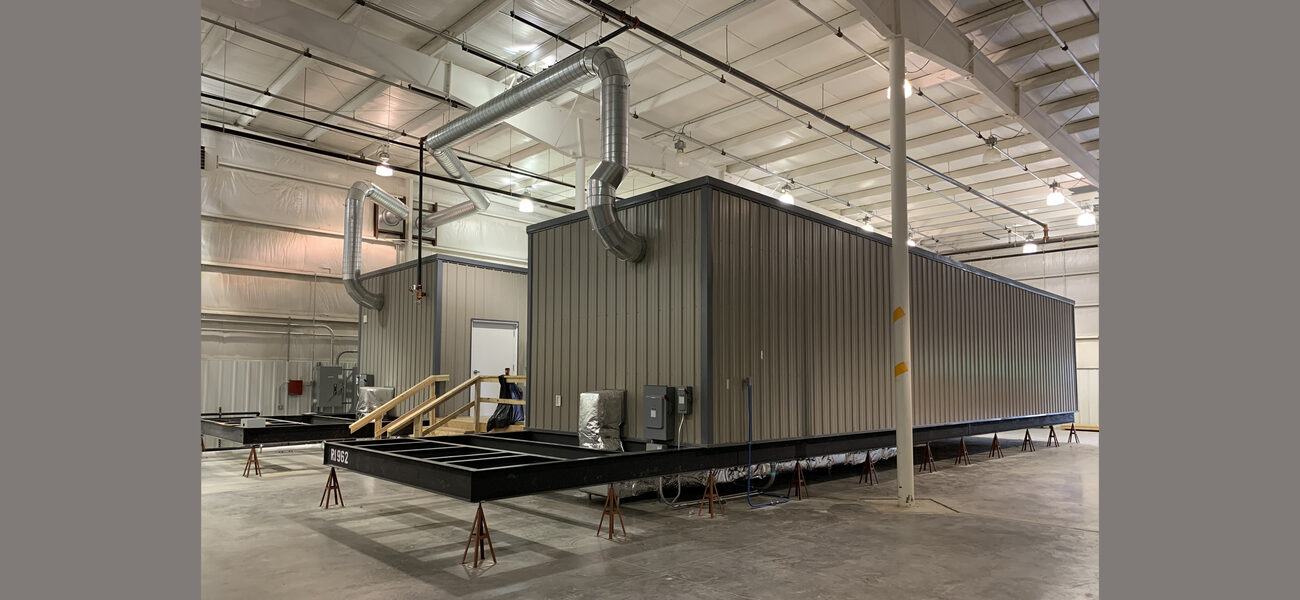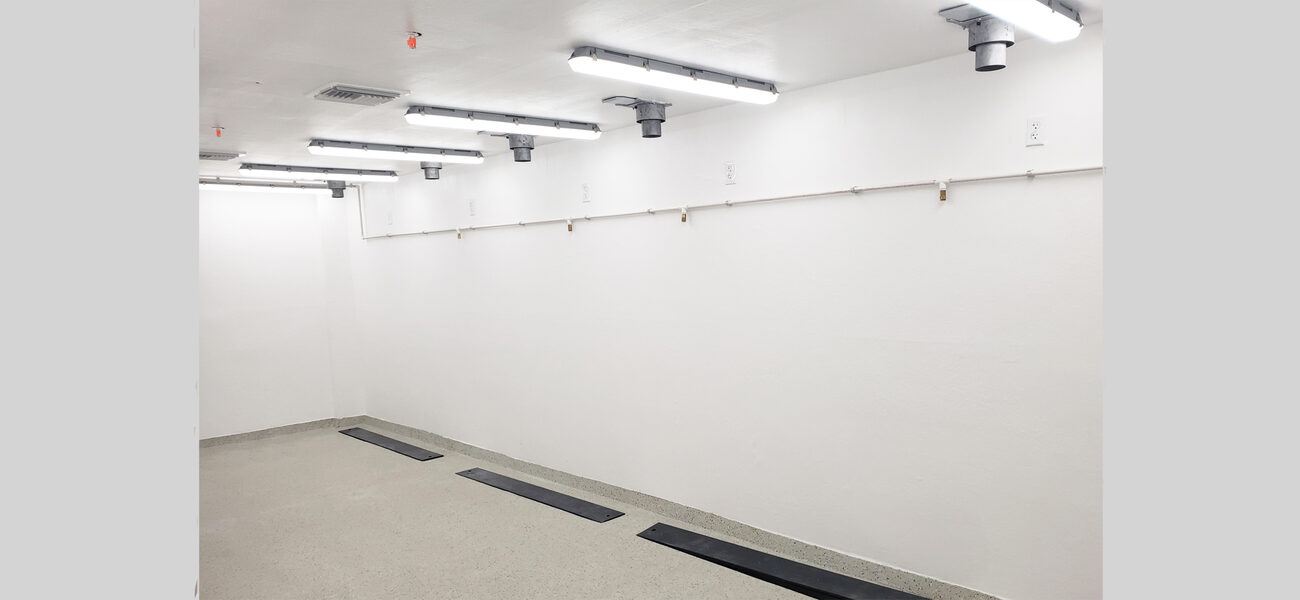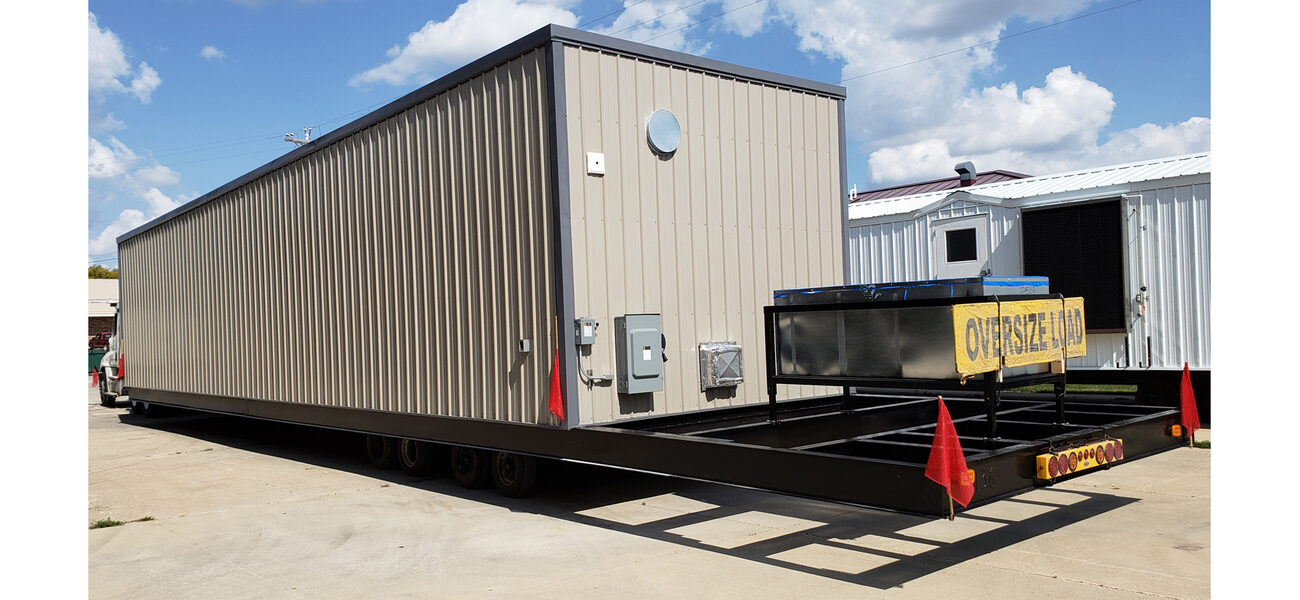The University of Missouri at Columbia is home to what Dana Weir-Guffey, the university’s assistant director for research in the Office of Animal Resources, calls a research trifecta—an agriculture school, a medical school, and a U.S. Veterans’ hospital. Combined, they spend over $350 million a year on research, including 550 active programs that involve animals. Despite that scale, planners didn’t have a ready-made solution when they realized that a gut-renovation of one of the university’s oldest and largest animal facilities in the medical school would require them to relocate 120 protocols for 18 months—1,800 cages in all. An underused warehouse, modular vivaria, and disposable cages provided a cost-effective solution.
“We considered relocating the animals to other vivaria on the very decentralized campus, but the medical school vivarium we were renovating was our dirtiest,” says Weir-Guffy.
The old med school vivarium had suffered a few outbreaks of pinworm, parvovirus, and other pathogens, which meant that the animals housed there couldn’t cross biosecurity lines without a quarantine. But there wasn’t room to quarantine that many animals at once.
“We needed to find a secure location, one where we could still maintain all our environmental parameters for our animals, but then also separate them from the rest of our other animal colonies,” explains Weir-Guffy.
They found their solution in two modular vivarium units supplied by Art’s Way Scientific.
Features, Great and Small
Art’s Way Scientific’s modular vivaria are built according to a standard configuration the company has used for more than 20 years, beginning with units supplied to U.S. veterans’ hospitals in 2001. Each unit measures 14 by 65 feet and is 14.5 feet tall.
The units typically include six ventilated cage racks, stored library style, with a biosafety cabinet or a change station in the corner, and a central corridor. Across that hallway is space that could be used for three more ventilated cages available for quarantines, procedural space, or a restroom.
The newest ones also have remotely accessible climate controls. “We added a feature where, if we could get an IP address for each one of the modular facilities, we could tap into the control system, and help them remotely set temperature, air pressures, and humidity,” says Daniel Palmer, president of Art’s Way Scientific.
The company charged around $50,000 to assist in the permitting process, including a full set of stamped drawings and other documents necessary for installing the units. Rental fees were $8,320 per month per unit, including delivery and installation. The initial lease was for 18 months, with a $5,700 extension per month on a 60-day extension term, not counting the $3,000-$4,000 in monthly depreciation allowed by the IRS over the first seven years.
But where would they park the units? The university has a compact campus, where space is generally at a premium, so they turned to an underused warehouse about two miles from the research laboratories.
Palmer liked what he saw: The building had a reinforced floor, high ceilings, and electric hookups, as well as operational water and sewer, fire alarms, and sprinkler systems. It was also badge-accessed, giving the keyed vivaria a second layer of security. “It was almost a perfect setting for us,” he says.
Perhaps the only important feature the temporary facility lacked was a cagewash, but as it would have cost the university more than $1 million just to hook in the water at that location, they decided to buy disposable cages from Allentown® instead, along with 10 new 160-cage racks. The Allentown NexGen™ racks made it possible to squeeze more cages into the vivaria than would have been possible with the 126-cage Allentown rodent racks that the medical school researchers had used previously. The warehouse had extra space to store the disposable cages.
Another space-saving move was a decision not to allow investigators’ access to the modular units, but instead have the cages carried to the permanent labs. This would give investigators more room to do their work while reducing traffic in and out of the temporary vivaria and limiting the intermingling of technicians with the laboratory staff.
“Like a chess game”
The installation followed a very precise plan. “This is like a chess game when you start this renovation process,” says Palmer. “You have animals, you have continuing research…your timing has to be perfect.”
The agreement was signed in February 2018, and the university approved the plan in March. In May, state-approved drawings and fire safety permits were issued. “The contract folks that we worked with were very responsive, they got things done very quickly,” says Palmer.
On Sept. 17, the modular buildings were delivered. By Oct. 8, the animals had moved in.
Only a few minor adjustments had to be made during installation. An overhead door was removed to get the units inside the building, and the units were elevated, so trenches did not have to be dug in the warehouse floor for the utilities. As an added advantage, there was no risk of pipes freezing, because installation was inside another building.
All in all, Palmer and Weir-Guffey agree that the project went very smoothly.
“We were in lockstep,” says Palmer. “They knew when they had to move animals out to facilitate this massive remodeling and construction project. Coordination was very good because of the involvement of animal care from the beginning.”
In his view, the fact that there was a lot of cooperation between the university facilities group and the animal care staff also helped the plan go smoothly. “Too often, we find that maybe the facilities group has taken care of the facilities and the animal care staff doesn’t have enough input,” says Palmer. “That was really critical in making this seamless.”
Beyond construction, learning to work with the disposable cages presented an added hurdle to the animal care team. “We had used disposable cages on a very small scale prior to this, so there was a learning curve for my staff on how to use these disposables appropriately,” says Weir-Guffey.
However, she says, the fact that the work overlapped with the COVID lockdown made the project easier. Many researchers were required to work from home, reducing both traffic to the vivaria and the numbers of people who had to be trained in how to handle the new cages.
Despite the pandemic restrictions and lack of access to the warehouse, investigators were able to continue their research, even with the animals out of their building, according to Weir-Guffey: Five days a week, her team transported the disposable cages to the campus, so the research teams could maintain the continuity of their research and avoid a valuable loss of time and money.
While some researchers resisted the rules at first, most eventually got used to letting her team take care of the cages and bring them to their benches. “They very much appreciated the animals being brought to them!” says Weir-Guffey.
“I’d do it again, 100 times”
Once the facilities in the medical school were complete, the animals were moved to the renovated vivarium at the medical school—all with a clean bill of health, as the pathogens had burned themselves out, according to Weir-Guffey. “It was fantastic,” she says. “It worked wonders.”
In July, Art’s Way replaced one of the units in the warehouse with another one configured somewhat differently and then sold both units to the Harry S. Truman Memorial Veterans’ Hospital, which took advantage of a $100,790 buy-out offer to make the modular warehouse vivarium a permanent feature in Columbia.
Many clients find the lease-purchase option attractive, says Palmer, because the lease, which is typically paid out of the operating budget, ends up paying for 80 percent of the value of the modular unit.
The only thing the VA has decided to add is an emergency generator. The VA has also shifted to reusable Allentown cages, which are washed at the VA hospital, rather than the disposable cages that were used during the renovation.
Aside from installing an emergency generator in the beginning, Weir-Guffey has no regrets about their solution to their temporary vivarium problem. “It wasn’t something that we had first considered, but once we got all the details and met with Dan, it checked all the boxes. I would do it again, 100 times,” she says.
By Bennett Voyles



